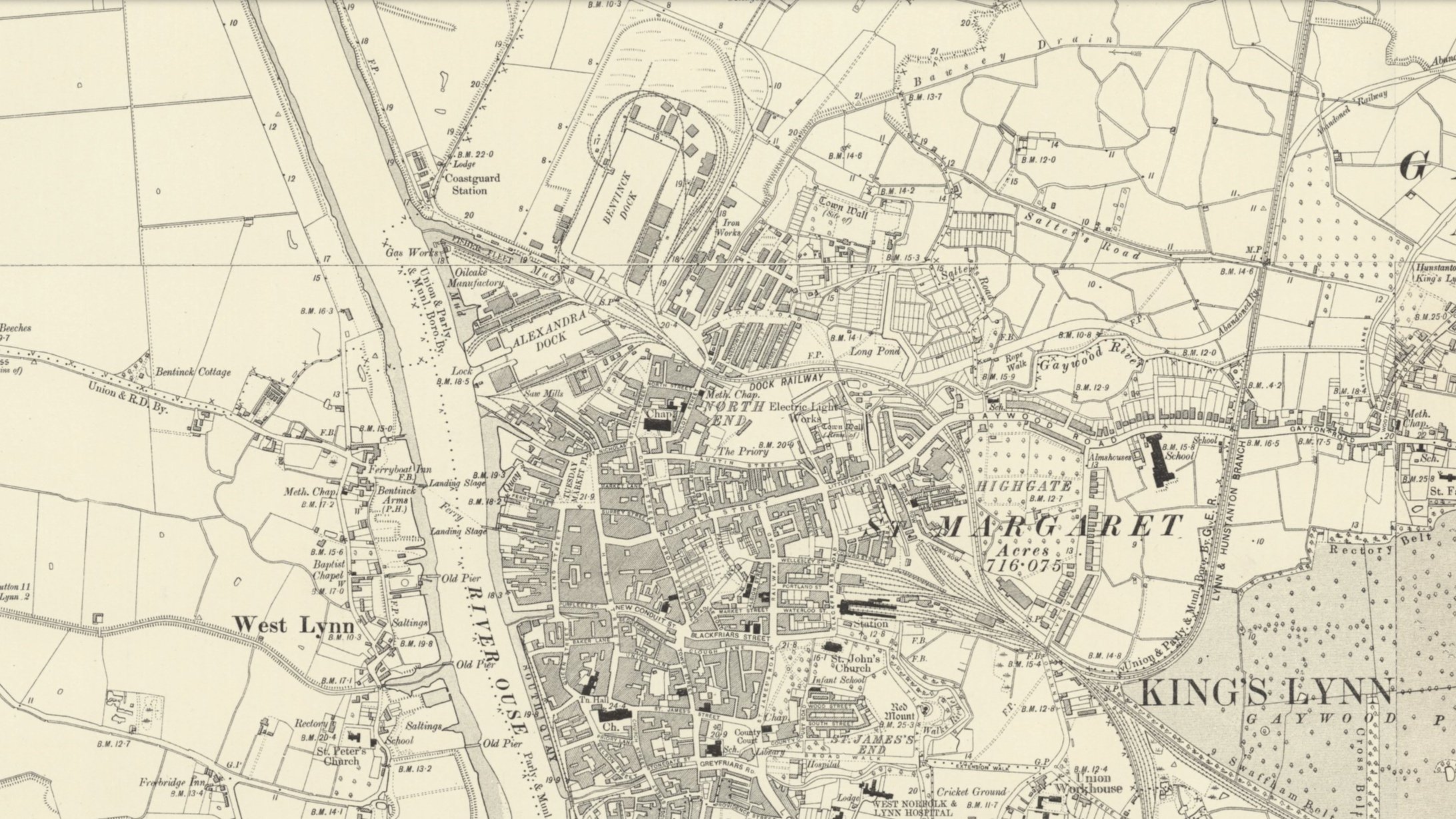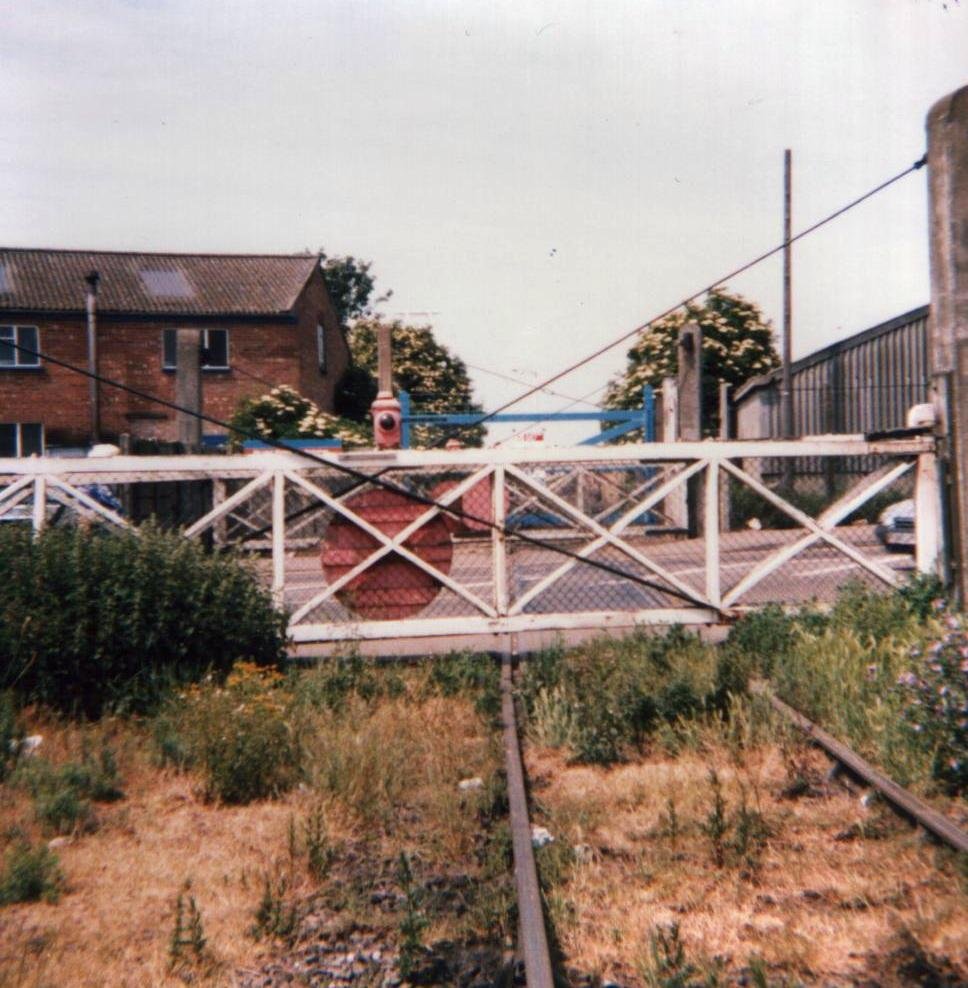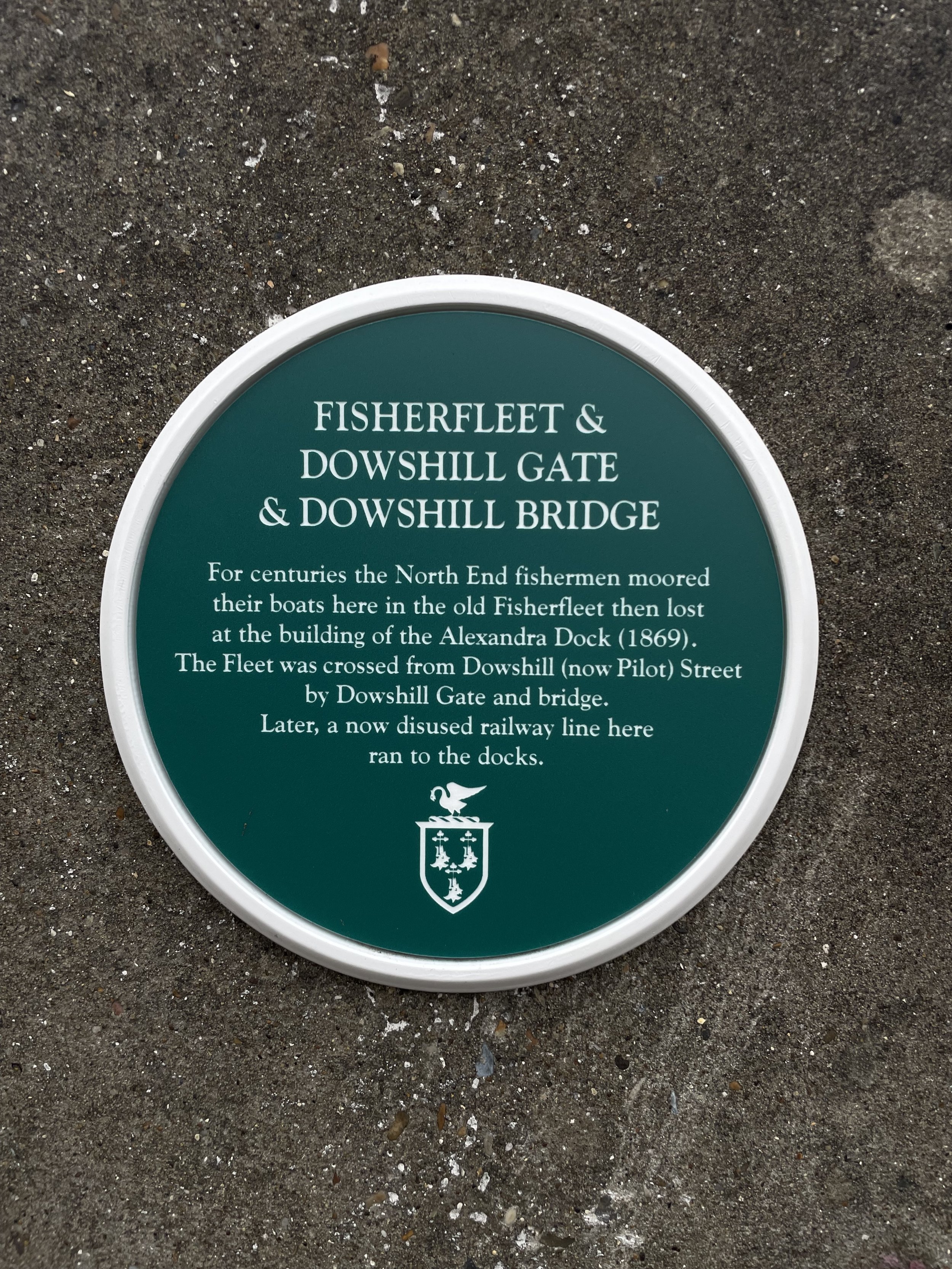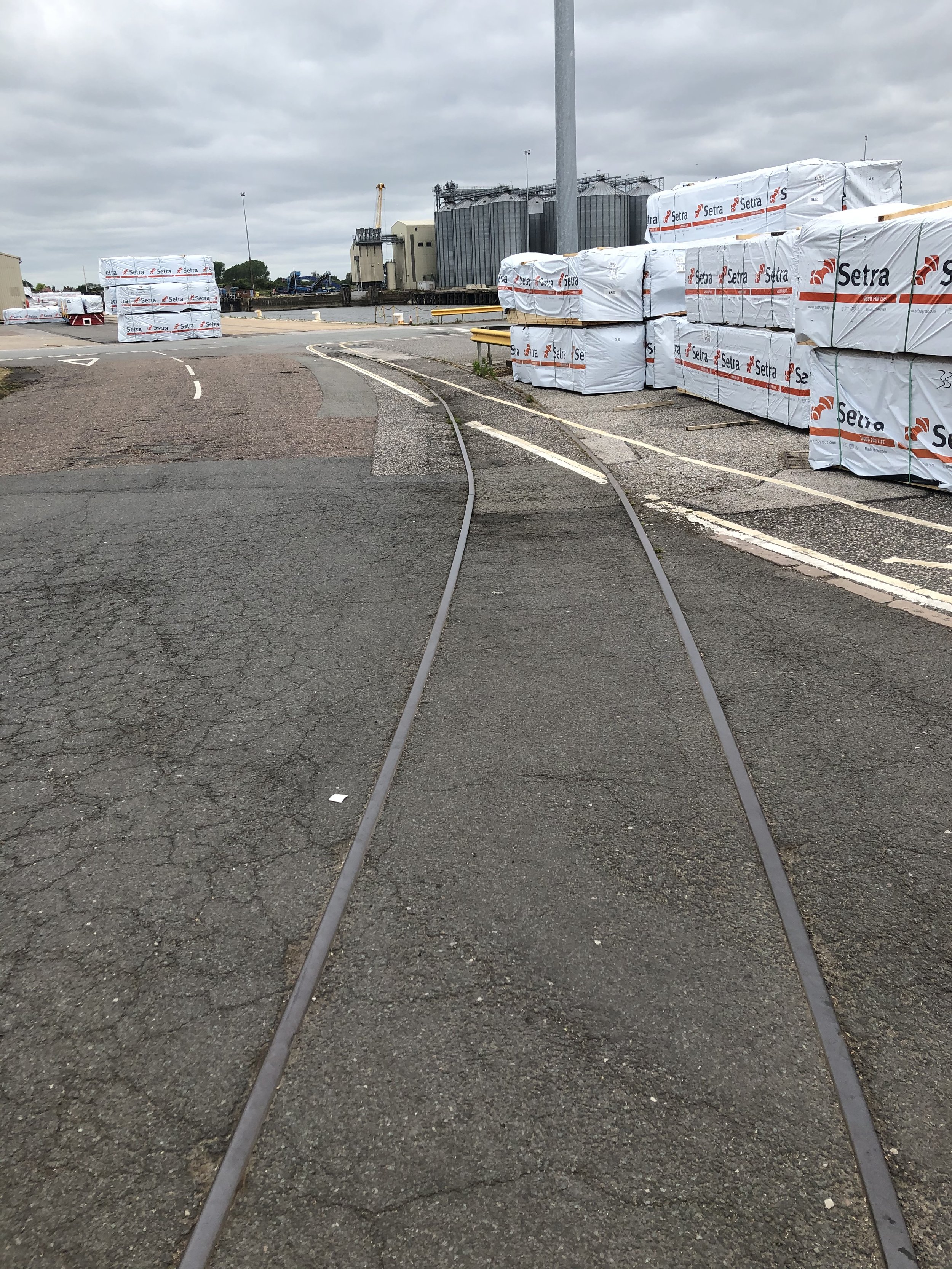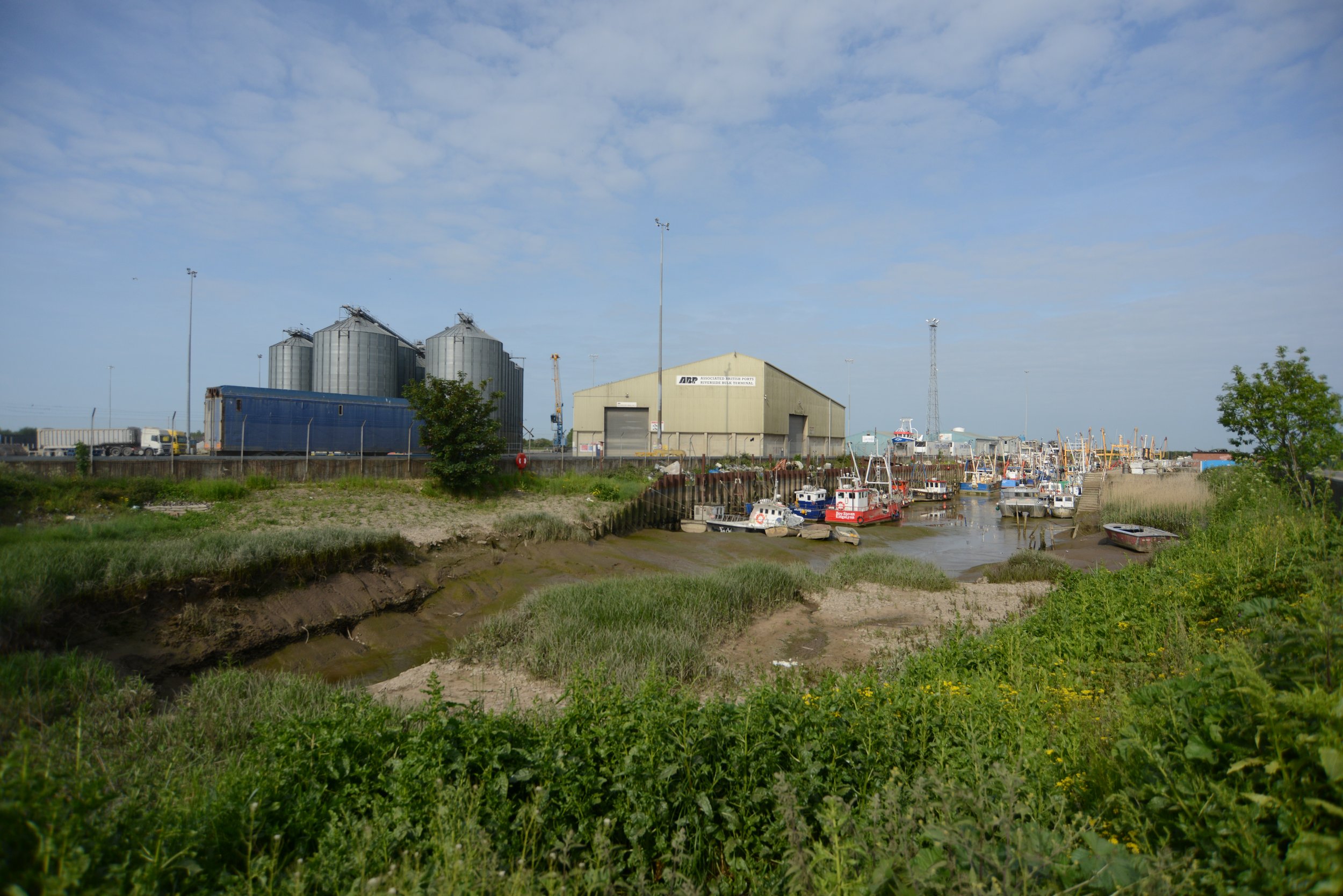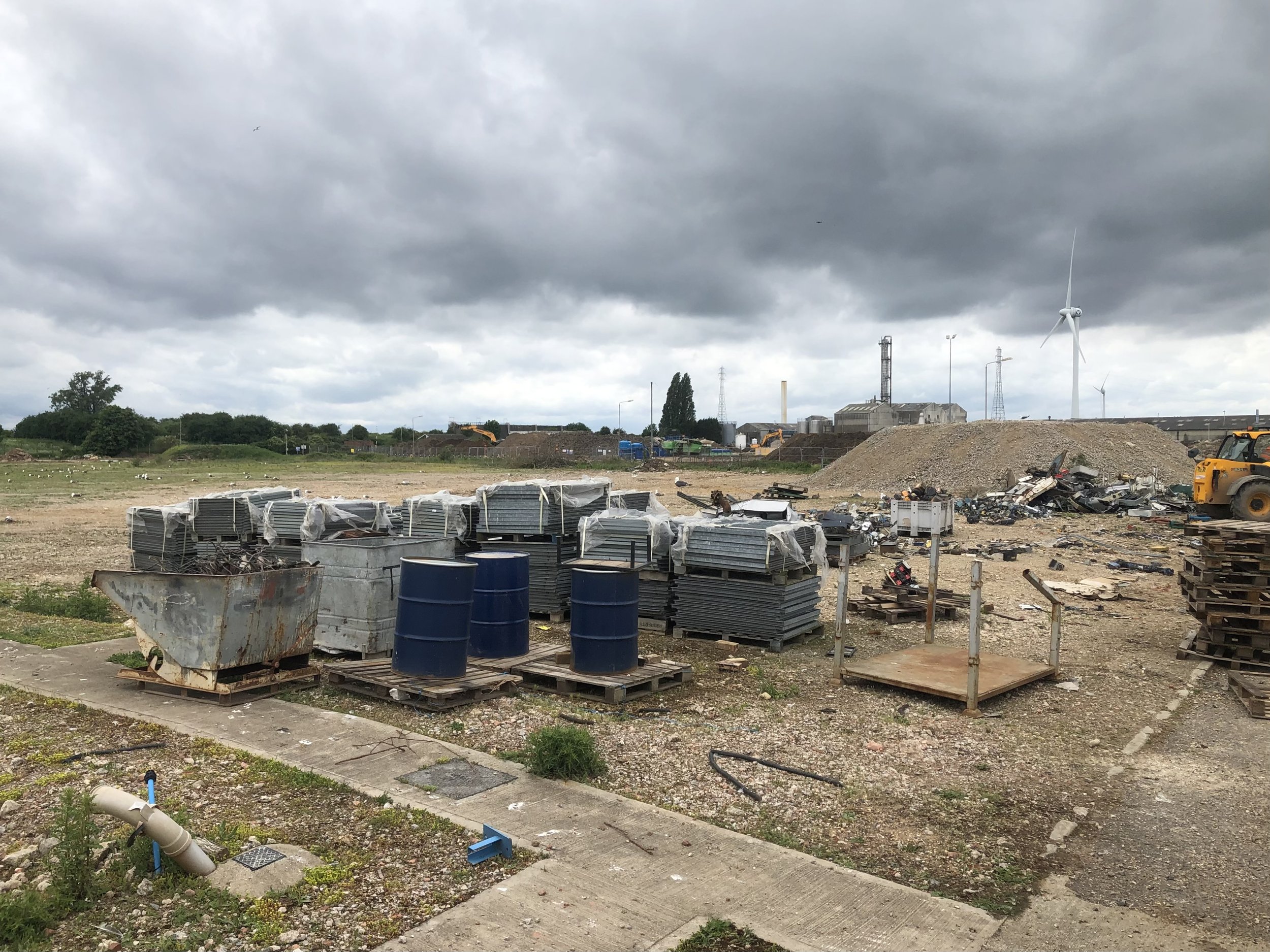
We recommend viewing this page on a desktop pc-laptop or tablet for a better viewing experience.
KING’S LYNN DOCKS BRANCH
The development of King’s Lynn Port can be traced back to the establishment of the King’s Lynn Dock Company in 1865. This company played a pivotal role in the port’s growth by constructing the Alexandra Dock, which was completed in 1869 and connected to the railway in 1870.
The new dock quickly became popular, with over 500 ships using it annually by 1876.
The Docks Branch was constructed shortly after the Lynn Ely Line and the Lynn Dereham Line, which were built in 1846-1848.
Shortly after in 1862, the Hunstanton branch was developed.
The King's Lynn Docks railway branch line began operating in June 1870, serving the Alexandra Dock and later the Bentinck Dock. It was the second branch line to serve the River Ouse, with the Harbour branch having been opened in 1849.
The Docks branch was situated to the North of the Harbour Junction, close to the main station at King’s Lynn at the Kings Lynn Junction.
A railway extension was added to the original Docks line in 1883, resulting in the opening of Bentinck Dock, which spans 800 meters in length.
At one time, the docks line was intended to be a part of an incomplete railway that would connect a new station at Austin Street in King's Lynn to the M&GN via a triangular junction off the Hunstanton line near Salters Road. This railway would run for half a mile before briefly using the dock railway and then diverging southwest towards an unfinished station at Austin Street. However, this line never saw any traffic and remained unused for some time. By 1906, the line had been repurposed into allotments.
The Crossing Cottage is the only structure left on Loke Road in Kings Lynn.
Located south of Kings Lynn Junction and at the entry point of the King's Lynn Harbour branch line, Harbour Junction granted the Docks railway access to a shuttle line. This line connected the Docks line to the M&gn and South Lynn station, freight yard, and, in later years, the beet factory line and sidings at the Campbells factory.
South Lynn station, established in 1865 and closed in 1959 for passengers, boasted a vast freight yard and served as a connection hub to various parts of Norfolk and its surrounding regions.
Part of it was used for freight services to the sugar beet factory, which was established near the former South Lynn station site.
British Sugar opened the site in 1927 and closed in the mid-1990s
The King’s Lynn Docks branch could also use this shuttle line for some freight services offered to British Sugar in the latter days.
During the 1960s, Dow Chemicals established a presence in King's Lynn, and an extension to the existing rail line was constructed to serve the new Dow Chemicals facility.
Access to the Docks branch was only possible from Kings Lynn Junction; the line ran directly onto the Docks Branch, and Dock’s trains had access to King's Lynn's large goods yard.
At Kings Lynn Junction, a line diverted to Hunstanton on the left, while a line straight ahead led to Dereham and Swaffham, and the main line to Ely, Cambridge, and London was on the right.
Entering the Docks Branch, Once past the Kings Lynn junction, the brief railway track proceeded by King's Lynn's extensive Goods yard and engine sheds, with a minor freight siding that catered for Dodmans iron works. The route subsequently passed beneath Dodmans bridge and veered towards the west, reaching the current location of Austin Fields industrial estate. Finally, it crossed what was then called Pilot Street crossing, now called John Kennedy Road and entered Alexandra Docks.
The Docks branch last saw any trains in May 1993, except for a few clearance stock instances afterwards.
Today, a small portion of the Docks Branch is still used up to Dodmans Bridge as a turnaround point for the sand freight services serving Middleton Towers off the Dereham Branch; it is no longer used for any other purpose. However, the vast goods yard has been redeveloped into a supermarket and other commercial units.
At Kings Lynn Junction, the Hunstanton Branch no longer exists, but the Dereham Branch remains in operation up to Middleton Towers for freight use, while the Lynn Ely Cambridge Mainline is still in daily use.
The gates at the now-called John Kennedy Road still exist and are primarily covered in Ivy on the side of the dock, with the other side still visible and not in brilliant condition.
Regrettably, as of June 14th, 2023, the gate on the opposite side of the Docks has been replaced with a steel fence by Network Rail. However, the gate on the other side of the dock still stands, albeit hidden behind overgrowth.
There are some remnants of the railway track at both the Docks and Dow Chemicals locations. Additionally, a river crossing bridge that was previously used for trains is now utilised as a swing bridge for road traffic.
The King's Lynn Docks have shifted their dependence to road traffic and the A1078 bypass, which was specifically built to serve the port and avoid the usage of the town centre. The A1078 is a relatively new access road, as before 1969 when the Hunstanton branch was operational, there would have been a need for a level crossing near the North Lynn industrial estate, which did not exist at that time. Additionally, there was no road or crossing before 1969.
It has been said that if the Hunstanton branch was to reopen, the docks branch line could be used as an exit route from King’s Lynn town as the construction of Lynn sport. Also, the A1078 that was built to serve King’s Lynn docks would now need a level crossing along this busy bypass blocking the Hunstanton line on its old track bed.
To this day, the track bed for the Docks branch line remains clear from King's Lynn Junction all the way to the Docks, without any construction along it.
MAPS
I would like to express my gratitude to the National Library of Scotland for providing the maps used in the following content.
My Google Maps coverage
Google maps
On the historical maps below, we can observe Kings Lynn Junction along with the Docks line, as well as the extensive goods yard, engine sheds, and the Dereham, Hunstanton, Lynn Ely Cambridge lines.
Historic maps covering King’s Lynn Docks
Dow Chemicals Branch.
50/50 Map Coverage from the Docks Branch Using Historical and Modern Maps.
KING’S LYNN JUNCTION
Thanks to The national library of Scotland.
The King's Lynn Junction is the starting point for services headed to the King's Lynn Docks.
In the photo below, you can see the extensive goods yard in King's Lynn, with the Docks branch extending towards the right.
Thanks to Historic England for the aerial photo. Please click on the photo for a link to the source page.
Kings Lynn Junction with the Docks sidings to the Left.
Photographer unknown
In this 2008 aerial photograph of King's Lynn Junction, the former goods yards have been replaced with a supermarket and commercial units. The remnants of the Docks line are visible, which now serves as a turnaround point.
Thanks to Historic England for the aerial photo. Please click on the photo for a link to the source page.
I captured a photo of the King's Lynn Junction in 2020. The picture displays the view towards the Docks Junction on the right, which is currently used as a turning point.
From this perspective, we can see King's Lynn Junction with the active signal box on the opposite side. The Dereham line is directly ahead, while the Ely Cambridge line is on the right.
On the left-hand side, we can imagine the Hunstanton Branch branching off.
In May 1981, a Class 37 locomotive is preparing to depart from the King's Lynn Docks line and freight yard.
Attribution Martin Addison / Kings Lynn / CC BY-SA 2.0
08713 shunter at taken at goods yard in King's Lynn Photographed in 1991 by Paul Miller
Attribution: Paul Miller-Wikimedia Commons
I captured an image of a Class 66 locomotive at the turnaround area near the loading bay of a nearby supermarket.
Docks Railway track still in use as a turn around point photographed from the local Supermarket carpark.
Extons road signal box
We are on our way back to King's Lynn junction, which is located near the King's Lynn station. If we continue further up the Fen line, we will reach Exton's Road. This used to have a signal box of its own, whose main purpose was to manage the sidings between King's Lynn junction and Exton's Road. Although it was not on the docks line, the signal box was responsible for overseeing the freight traffic heading towards King's Lynn that could eventually lead to the Docks branch and freight coming off the docks.
Dodman's Foundry
The old Dodman's Foundry, established by Alfred Dodman in 1875, was a renowned iron foundry located on Highgate Field. It specialized in engineering work, particularly in the production of boilers, and even created several traction engines and steam locomotives. Following World War II, the foundry shifted its focus to designing and manufacturing pressure vessels, heat exchangers, and storage tanks for the petro-chemicals and North Sea industries. Unfortunately, the site was demolished in 1977 and replaced with residential housing. However, the road bridge that previously spanned the docks branch is still known as Dodman's Bridge in honor of the former foundry. The site also had its own small sidings that were connected to the Docks branch.
Thanks to the National Library of Scotland
I came across some images of Dodmans factory on the KL forums website page.
Attribution: KL Forums
In May 2023, a photograph captures the former Dodmans Foundry site, which has since been repurposed for housing.
The present end of the Docks railway line.
On the Docks railway line page, we have reached the section where the line currently terminates. It serves as a turnaround point exclusively for freight trains travelling to and from Middleton Towers. Beyond this point, the railway remains unobstructed, but unfortunately, it is overgrown and unsuitable for walking.
We can observe railway workers dismantling the railway line on the docks railway following Dodmans bridge.
As of today, the line ends right after Dodmans Bridge and before the railway crossing bridge that goes over the Gaywood River.
Attribution: Paul Miller-Wikimedia Commons
End of the Docks Branch
Attribution: Paul Miller-Wikimedia Commons
From Gaywood Road via Dodman's bridge, a fascinating image of the docks branch that was captured in 2020 can be observed.
The photograph displays the line arriving from King's Lynn Junction, which serves as a turnaround point for sand freight trains.
Typically, these trains are pulled by class 66 trains, hauling silica sand to the North.
On the right side of the picture, you can notice flats that now occupy the space where Dodmans foundry was formerly situated.
As we approach the end of the line for the docks railway in 2020, the area beyond this point appears to be closed off. However, the railway bed is still visible and overgrown, despite the construction of numerous housing and industrial buildings the track bed remains clear.
I revisited this site in 2023, but I noticed that nothing had changed since my last visit.
Once again in 2024, I revisited the site as the overgrowth to the rear of the fence had been cut back.
The Docks Line railway bridge.
In the vicinity of Dodmans bridge, the Docks railway used to cross the Gaywood River via a small bridge located near the buffer where the railway currently terminates at the Turnaround point. Thanks to a tip-off from a Middleton Towers restoration team member, it was discovered in 2023 that this bridge was still present, albeit hidden behind a fence. However, it was still possible to take photographs of it.
Attribution: Paul Miller-Wikimedia Commons
Attribution: Paul Miller-Wikimedia Commons
In May 2023, I received a tip from Middleton Towers Restoration about the Gaywood River crossing bridge in King's Lynn.
Unfortunately, only remnants of the bridge remain, as seen in the photo.
It was recently fenced off to prevent access.
During my first visit, I overlooked this bridge and was surprised to discover it later.
I can't believe I missed this.
Traces of an old railway track remain from the Docks Railway.
King’s Lynn Docks railway sidings.
During the early days of the Docks railway, there were some sidings located not far from the Gaywood River crossing. These sidings would have been situated along the public walkway down Kettlebell Lane and close to where the Austin Fields industrial estate is now located. It is unclear when these sidings stopped being used, as I could not find any information on the matter. However, during my visit in 2020, I discovered some small remains left behind.
Unfortunately, upon revisiting the area in 2023, I was disappointed to find that the King's Lynn Council had covered up these historic artefacts. As a result, they are now lost from public view.
Please, kindly click on the Google Maps link provided.
1892-1914 maps show the sidings off the docks railway.
Credit National library of Scotland
Photographs of the remains of the Docks railway sidings were taken by me in 2020, but unfortunately, they have been covered over since then. The remnants served as a reminder of the railway's history.
Thanks to Paul Miller for the photo used below
Attribution: Paul Miller-Wikimedia Commons
When revisiting in 2023, it becomes apparent that the rails have been sadly covered over.
During my visit in 2023, I discovered some small concrete pieces near the location of the sidings. It is possible that they could have been a part of the railway, but I am not entirely certain. If you have any information regarding this matter, please do not hesitate to get in touch with me.
Foot crossing
Heading towards John Kennedy Road, there were two pedestrian crossings. One, which according to historic maps, was a footbridge. With the other being a pathway.
On my first visit, traces of old railway tracks were left behind, but the borough council has since covered these relics.
The picture below shows the old tracks that have unfortunately been covered over.
The old docks line track bed with the Grain silo seen in the background.
Salters road & Gaywood road Junction
A plan was created to link the M&GN railway, which involved a junction at Bawsey leading to a triangular junction along the Hunstanton Branch. The aim was to extend the railway to a new terminus at Austin Street in Kings Lynn, using the dock railway track. Unfortunately, this line did not become operational and today, parts of the track bed in North Lynn still remain clear.
Additionally, a crossing cottage remains intact, along with what I believe are the buttresses close to Lynn Sport, where the abandoned railway would have crossed over the Gaywood River.
Historic maps showing the Abandonded railway
Thanks to the National Library of Scotland for the maps.
The old crossing cottage from the abandonded railway at Loke road in North Lynn.
Former foot bridge crossing
The second crossing was from Loke Road to Kettlewell Lane, and later the Austin Fields industrial estate. Historic maps indicate a footbridge crossing over the railway in this area during the railway's early days.
I would like to express my gratitude to Paul Miller and Wikimedia for providing us with a glimpse of the first pedestrian crossing between Loke Road in King's Lynn and Austin Fields, captured when the railway was still in place
Attribution: Paul Miller-Wikimedia Commons
I captured the two pictures displayed below of the former track bed where the docks railway used to operate before its closure. At the time the photographs were taken, the bed appeared extremely overgrown. I positioned myself at the spot where the old pedestrian crossing used to exist.
The two pictures below were captured in 2023
A small part of the track was left Behind close to the Austin Fields industrial estate by the old pedestrian crossing
Taken in 2020
Taken in 2023 the pedestrian crossing at Austin fields
John Kennedy Road Crossing
John Kennedy Road's level crossing was previously known as Pilot Street. It has been present since the railway's inauguration.
Unfortunately, on June 14th, 2023, Network Rail removed one side of the crossing gates and replaced it with a metal fence.
The fence was erected to prevent littering.
Historical maps showing the Level crossing
Thanks to the National Library of Scotland for the map.
Please feel free to click Google Maps below for the position of the crossing gates.
I want to express my gratitude to Paul Miller for providing the photos of the level crossing when the railway was still intact.
Attribution: Paul Miller-Wikimedia Commons
Attribution: Paul Miller-Wikimedia Commons
Attribution: Paul Miller-Wikimedia Commons
After Closure
The crossing gates long after the railway was closed taken in 2020 and 2021
The remaining railway tracks crossing John Kennedy Road at King’s Lynn
Replacement gates at John Kennedy Road
On June 14th, 2023, Network Rail removed one side of the crossing gates and replaced it with a metal fence.
At the time of writing, the gates on the Dockside were still hidden behind ivy and overgrowth, rendering them invisible.
The hinges were left behind on the concrete posts after the gate on this side was removed.
A memorial plaque has been erected since the removal of the railway gates, placed onto one of the old remaining concrete supports.
Kings Lynn Docks
The King's Lynn Docks are located on the northern edge of the town, utilizing the great River Ouse. The port infrastructure was established during the 19th century when a docks and railway company was formed in 1865. The construction of the Alexandra Dock was completed in 1869 and connected by rail in 1870, attracting over 500 ships annually by 1876. The larger Bentinck Dock, measuring 800 meters (2,600 ft) in length, was opened in 1883.
The Docks remain operational today, although the majority of traffic is now redirected to the A1078 Northern bypass, as opposed to the previously closed docks railway.
I found some interesting historical maps depicting the Docks at Kings Lynn, including the Railway.
Thanks to the National Library of Scotland for the map.
Please click on Google Maps below for maps of Kings Lynn Docks.
Historic Aerial pictures from King’s Lynn Docks
The photos used in this content have been included through an embed code with permission from Historic England.
Please click on the image below for access to Historic England page
Kings Lynn Docks Tracks & Bridges
I want to express my gratitude to Paul Miller for providing the photos of the railway at the King’s Lynn Docks.
Attribution: Paul Miller-Wikimedia Commons
Attribution: Paul Miller-Wikimedia Commons
Attribution: Paul Miller-Wikimedia Commons
Whilst delivering to the Docks in Kings Lynn, I was fortunate enough to stumble upon some antique railway parts that were left behind. I managed to capture some photos of them in June 2020.
This bridge on King's Lynn Docks has a rich history. It was originally used as a railway crossing, but now serves as a road traffic crossing. A photograph taken in 2023 captures its current use.
Around Kings Lynn Docks
King’s Lynn Bentinck Dock
King’s Lynn Fishing Fleet
Thanks to John Fielding from Wikimedia, we can enjoy an aerial view of King's Lynn docks.
John Fielding from Norwich, UK, CC BY 2.0 <https://creativecommons.org/licenses/by/2.0>, via Wikimedia Commons
Dow Chemical’s Branch Line
Credit to the National Library of Scotland
King's Lynn welcomed Dow Chemicals in the 1960s, well after the establishment of the original Dock railway line. The Docks Line had been operational for a considerable time before merging with the Dows chemical Factory railway addition.
During my visit to Dow Chemicals in August 2022, I came across some old railway tracks at the entrance. One of the tracks led to the chemical site and curved towards King's Lynn Docks. Although the pictures I took against the sun are of low quality, I tried my best to salvage them. It's unclear how long these railway remains will remain intact, as some parts of the site are being demolished and decontaminated, while another section is still being used for storage by a different company. Hopefully, these tracks will survive a little longer before another piece of history is lost.
Dow Chemical’s Wikimedia past pictures
I would like to express my gratitude to Paul Miller for providing these pictures via wikimedia commons from the Dow Chemical railway during its operational days.
Attribution: Paul Miller-Wikimedia Commons
Attribution: Paul Miller-Wikimedia Commons
Attribution: Paul Miller-Wikimedia Commons
Attribution: Paul Miller-Wikimedia Commons
Attribution: Paul Miller-Wikimedia Commons
Attribution: Paul Miller-Wikimedia Commons
Attribution: Paul Miller-Wikimedia Commons
Dow Chemical’s Railway Bridge
During the demolition of the factory at Dow Chemicals site, an old railway bridge remained standing.
Dow Chemical’s Past
Ben Harris / Dow Chemical works / CC BY-SA 2.0
Dow Chemical Works by Mat Fascione, CC BY-SA 2.0, via Wikimedia Commons




